Best Sri Lanka Wildlife Safaris: A Complete Guide to Yala, Wilpattu, and Udawalawe(2025)
By Tripceylon
Tue Jun 10 2025
7 mins read

Sri Lanka is a paradise for nature lovers and wildlife enthusiasts, offering a safari experience that rivals those in Africa but with its own unique charm. Known for its breathtaking landscapes, tropical rainforests, and wide array of wildlife, the island is home to some of the most remarkable national parks in South Asia. If you’re planning a trip in 2025, Sri Lanka’s wildlife safaris, especially in Yala, Wilpattu, and Udawalawe, should top your list.
Whether you’re hoping to spot the elusive leopard, witness the majesty of wild elephants, or immerse yourself in a birdwatcher’s haven, this guide will give you everything you need to plan an unforgettable wildlife adventure in Sri Lanka.
Why Sri Lanka is a Top Destination for Wildlife Safaris
In recent years, eco-tourism has grown in popularity, with travelers seeking more sustainable and immersive experiences in nature. Sri Lanka is at the forefront of this trend, offering incredible wildlife encounters with its rich biodiversity and commitment to conservation.
Unlike other popular safari destinations in Africa, where vast plains stretch as far as the eye can see, Sri Lanka offers a variety of landscapes, from dense jungles to coastal wetlands. These varied ecosystems support a wide range of species, including leopards, elephants, sloth bears, crocodiles, and over 400 species of birds.
If you’re interested in eco-friendly travel, Sri Lanka’s wildlife parks also contribute to conservation efforts, preserving endangered species and their habitats. A safari here not only provides unforgettable moments but also supports crucial conservation work.
Yala National Park: Sri Lanka’s Premier Leopard Safari Destination
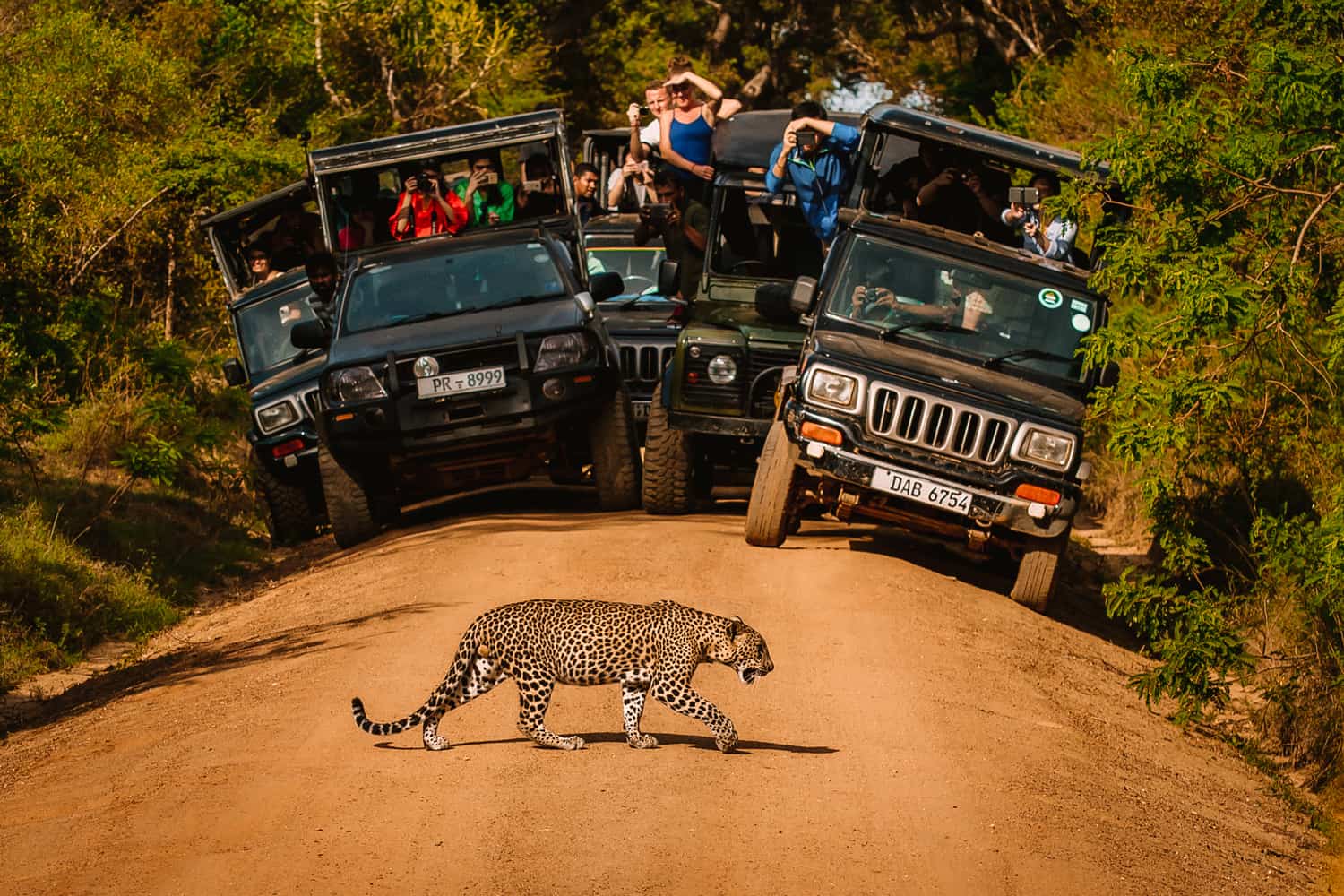
Overview of Yala
Yala National Park, located in southeastern Sri Lanka, is the most popular and well-known safari destination in the country. Covering nearly 979 square kilometers, Yala is famous for having one of the highest densities of leopards in the world, making it a magnet for wildlife photographers and big cat lovers. The park’s diverse habitats, which include forests, grasslands, and wetlands, support an astonishing variety of animals.
What Wildlife Can You See in Yala?
While leopards are the main attraction, Yala is also home to:
- Sri Lankan Elephants: Though they are not as numerous here as in Udawalawe, Yala offers plenty of opportunities to see these majestic creatures in the wild.
- Sloth Bears: These rare and elusive creatures are often spotted during the fruiting season when they feast on palu trees.
- Crocodiles: Both saltwater and freshwater crocodiles are common in Yala’s lagoons and water bodies.
- Birdwatching: With over 200 bird species recorded, including painted storks, peacocks, and flamingos, Yala is a paradise for birdwatchers.
Best Time to Visit Yala

The best time to visit Yala National Park is during the dry season (February to June), when water levels are low, and animals congregate around waterholes, making sightings more frequent. Safaris are typically offered in the early morning or late afternoon when the animals are most active.
Safari Tips for Yala
- Book in Advance: Yala is one of the busiest parks in Sri Lanka, especially during the peak tourist season, so it’s advisable to book your safari well ahead of time.
- Opt for a Half-Day Safari: A half-day safari allows ample time to explore the park’s Block 1, which is renowned for its leopard sightings.
- Hire a Knowledgeable Guide: To increase your chances of seeing leopards and other wildlife, hire an experienced guide who knows where the animals tend to roam.
Wilpattu National Park: The Land of Lakes
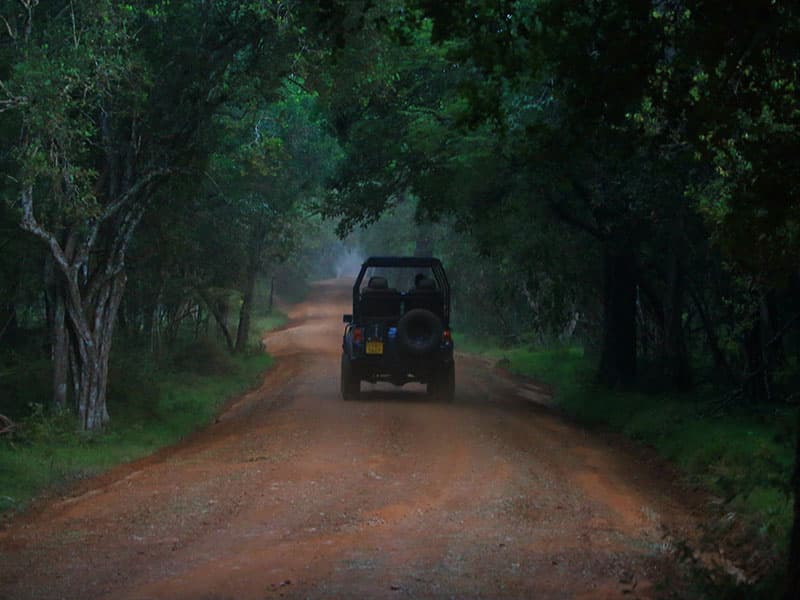
Overview of Wilpattu
Located in the northwest of Sri Lanka, Wilpattu National Park is the largest and oldest national park on the island, covering over 1,300 square kilometers. Unlike the busier Yala, Wilpattu offers a more tranquil safari experience, with fewer visitors and a more remote, untouched feel. The park is named after its villus (natural lakes), which attract a variety of wildlife, particularly during the dry season.
What Wildlife Can You See in Wilpattu?
- Leopards: While the leopard population in Wilpattu is significant, sightings can be rarer than in Yala due to the dense forest. However, patience often rewards visitors with a glimpse of these magnificent predators.
- Sloth Bears: Wilpattu is known as one of the best places to spot sloth bears in Sri Lanka.
- Elephants: Although Wilpattu doesn’t have the large elephant herds found in Udawalawe, elephants can still be seen wandering around the park’s waterholes.
- Birdlife: Wilpattu is also a great destination for birdwatchers, with species such as the brown-capped babbler, painted stork, and black-necked stork often sighted.
Best Time to Visit Wilpattu
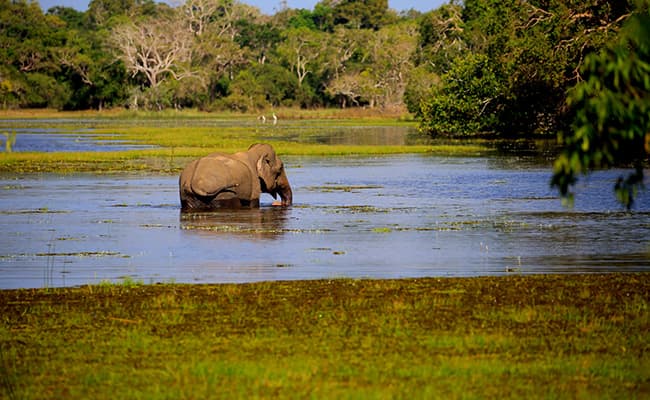
The dry season, which runs from February to October, is the best time to visit Wilpattu. During this period, the natural lakes shrink, and animals gather around the remaining water sources, making wildlife sightings easier and more frequent.
Safari Tips for Wilpattu
- Go for a Full-Day Safari: Because Wilpattu is vast and wildlife sightings can take time, a full-day safari allows you to explore more of the park and increases your chances of seeing leopards, bears, and other wildlife.
- Choose an Experienced Driver: Since the terrain can be challenging to navigate and wildlife can be elusive, having a skilled driver and guide is key to getting the most out of your safari.
- Pack for a Quiet Adventure: Wilpattu’s remote location means fewer crowds, so embrace the peaceful experience and soak in the natural beauty.
Udawalawe National Park: The Elephant Lover’s Dream
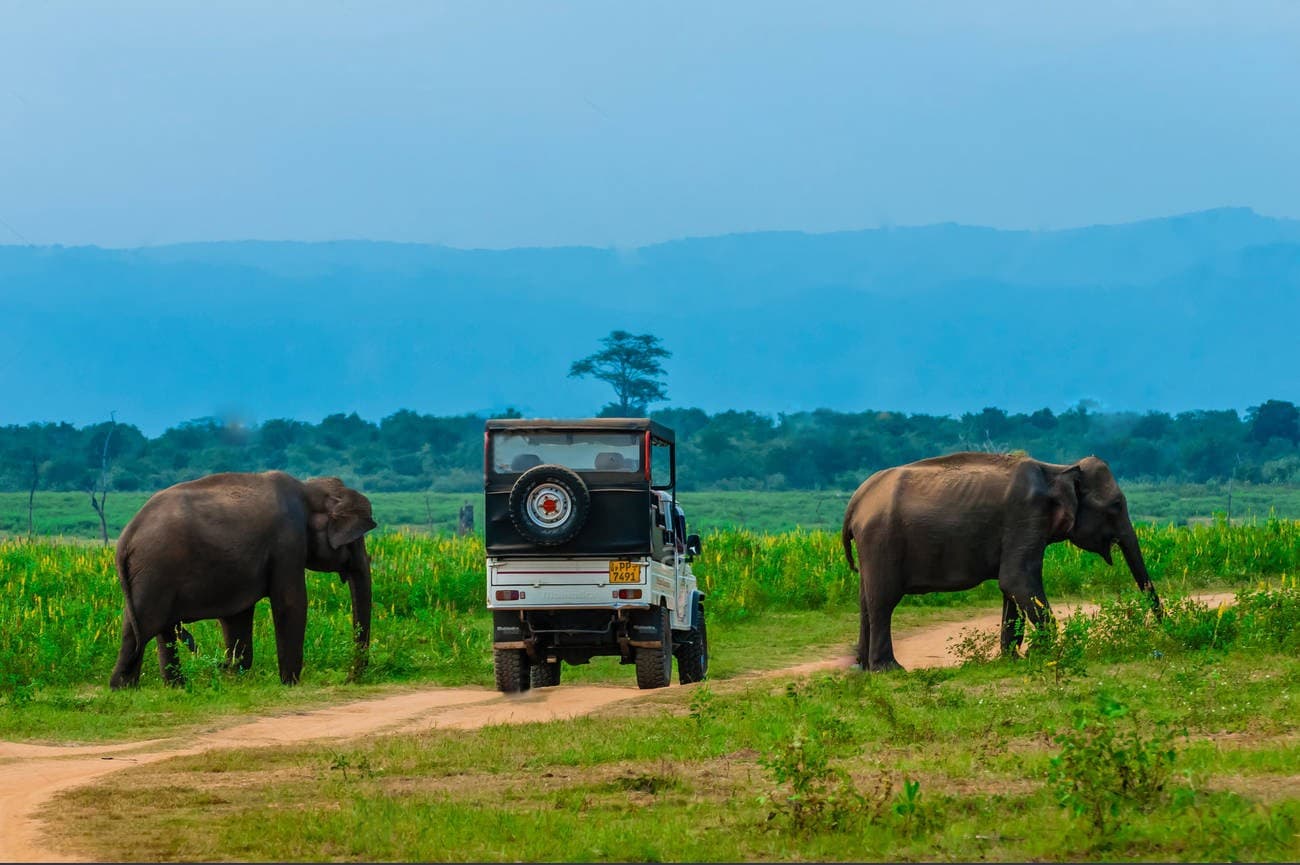
Overview of Udawalawe
If elephants are at the top of your wildlife bucket list, then Udawalawe National Park is where you need to go. Located in the southern part of Sri Lanka, Udawalawe is famous for its large populations of Asian elephants, with herds roaming freely across its savannah-like landscape. The park, which covers 308 square kilometers, is dominated by the Udawalawe Reservoir, providing a picturesque setting for wildlife viewing.
What Wildlife Can You See in Udawalawe?
- Elephants: With over 500 elephants in the park, sightings are all but guaranteed. Visitors often see elephants up close, as they cross the open plains in herds or gather at waterholes.
- Water Buffalo: Large herds of water buffalo are frequently seen cooling off in the water.
- Crocodiles: The park’s waterways are home to a healthy population of crocodiles, which are commonly seen sunning themselves on riverbanks.
- Birdwatching: Udawalawe is also known for its vibrant birdlife, including raptors like the crested serpent eagle, as well as waterbirds like the painted stork and purple heron.
Best Time to Visit Udawalawe

Udawalawe is a year-round destination for elephant lovers, but the dry season (May to September) is ideal for wildlife viewing, as animals tend to congregate around the reservoir and other water sources.
Safari Tips for Udawalawe
- Don’t Miss the Elephant Transit Home: Located near the park entrance, this conservation project rehabilitates orphaned elephants before releasing them back into the wild. Visitors can watch young elephants being fed and cared for.
- Choose an Afternoon Safari: While morning safaris are popular, the afternoon hours can provide excellent opportunities for watching elephants as they cool off by the reservoir.
- Photograph the Landscape: Udawalawe’s wide-open plains and the striking backdrop of the reservoir provide perfect settings for dramatic wildlife photography.
Planning Your Sri Lankan Wildlife Safari
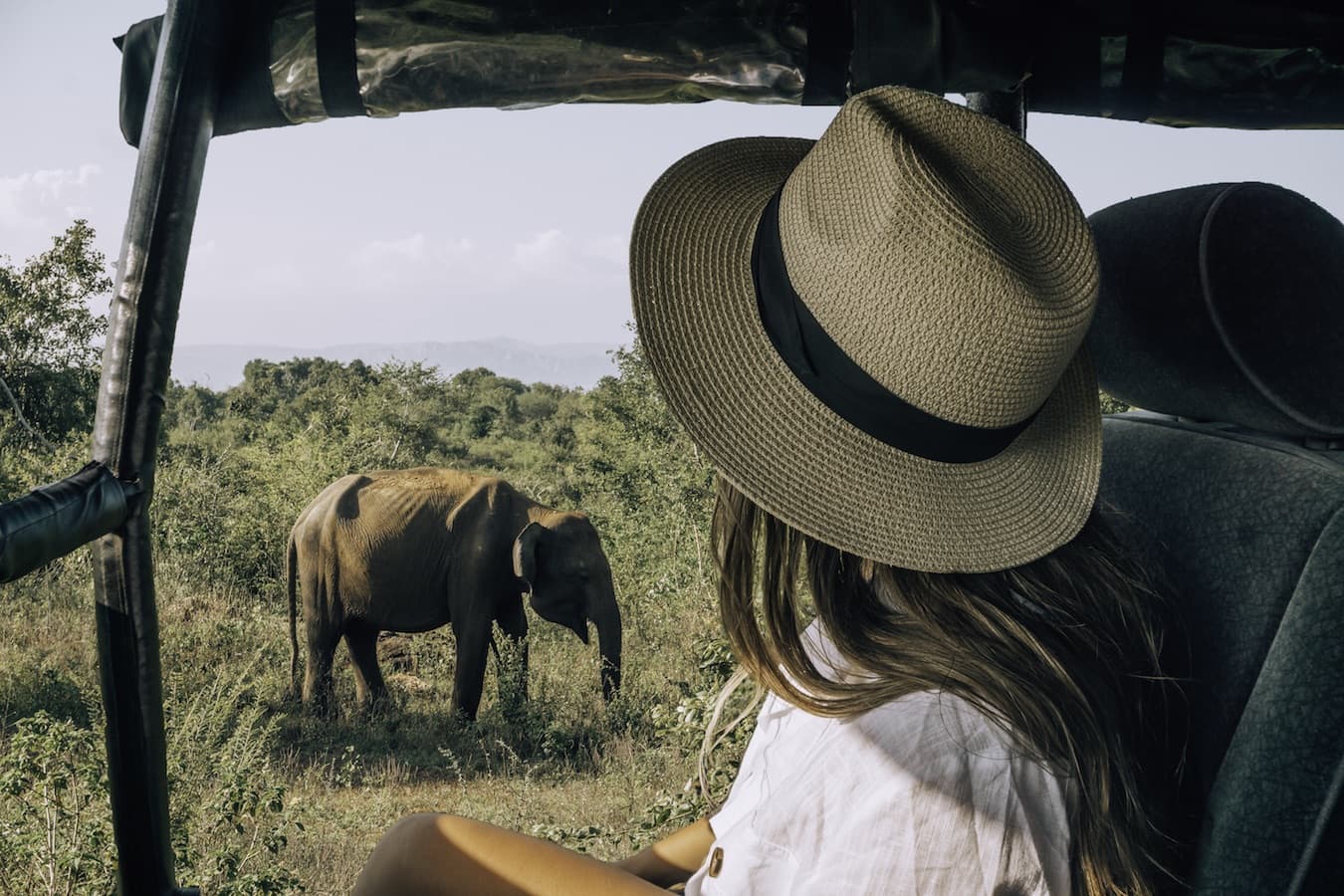
Choosing the Right National Park for You
Each of Sri Lanka’s national parks offers a unique safari experience. If you’re eager to see leopards, Yala is your best bet, though it can be crowded during peak season. Wilpattu offers a quieter, more remote experience with a similar variety of wildlife, while Udawalawe is perfect for guaranteed elephant sightings, making it especially appealing for families and first-time safari-goers.
When to Visit
Timing your safari for the dry season (February to September) ensures better wildlife viewing opportunities, as animals gather around water sources. Plan to book your safaris well in advance, especially if you’re visiting during the peak tourist season.
What to Bring
- Camera with Zoom Lens: You’ll want to capture close-up shots of wildlife without disturbing the animals, so a good camera with a telephoto lens is essential.
- Binoculars: Ideal for birdwatching or spotting animals from a distance.
- Light, Neutral-Colored Clothing: Wearing light colors will help you blend in with the environment and stay cool in Sri Lanka’s tropical heat.
- Sun Protection: Pack sunscreen, sunglasses, and a wide-brimmed hat to protect yourself from the sun’s strong rays during the open-air safaris.
Conclusion
Sri Lanka’s wildlife safaris offer a rare and exhilarating opportunity to get up close and personal with some of the world’s most fascinating animals. Whether you’re tracking leopards in the jungles of Yala, enjoying the peaceful lakes of Wilpattu, or marveling at the herds of elephants in Udawalawe, Sri Lanka’s national parks deliver an unmatched safari experience.
Ready to plan your adventure? Explore more of Sri Lanka with Tripceylon — your trusted guide for essay trip planning, local experiences, and the best safari deals.
Frequently Asked Questions